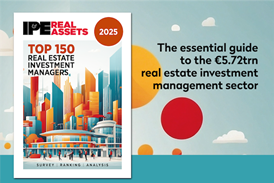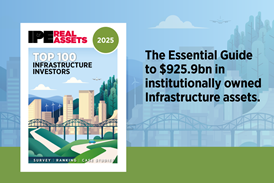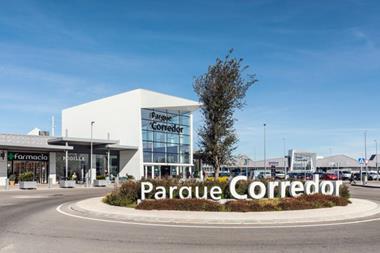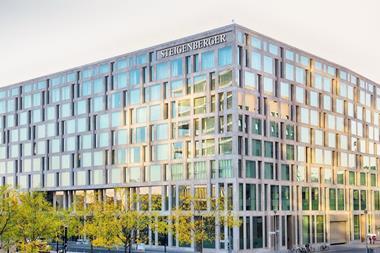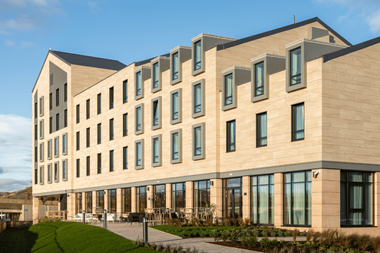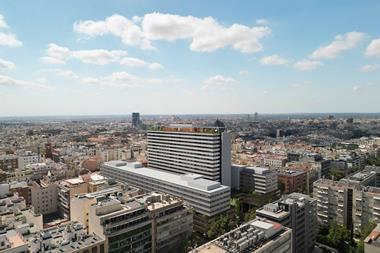Institutional investors have signalled a greater appetite for risk in the year ahead, according to the global Investment Intentions Survey 2020, published on Friday by Inrev, Anrev and Prea.
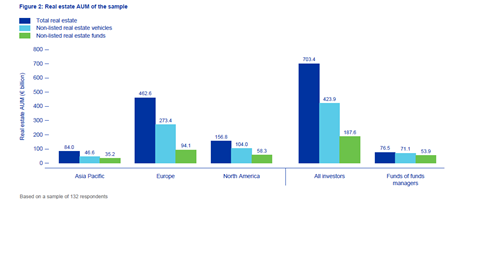
Twenty percent of global investors investing in Europe – including a majority of those domiciled in the region – cited ‘opportunity’ as their preferred investment style. This is up from 9.8% last year and marks the highest percentage since 2009.
These results reflect investors’ ongoing search for alternative ways to deploy capital and drive returns, in the face of continued low interest rates and low yields. They also build on a continuing trend, with investors having on average allocated more than 12% of their total real estate AUM to opportunity strategies in 2019 – an increase of almost 50% compared with the previous year.
North American investors led the charge, increasing allocations to opportunity style investments from 15% in 2019 to 37%. Investors from Asia Pacific upweighted their exposure to opportunity from 3.3% to 7.2% as well as raising their allocations to value added strategies from 6% to 9%, over the same period. European investors slightly reduced allocations to opportunity from 5.6% to 5.4%, focusing on core instead.
Ebb and flow of capital allocations
The survey indicates that a total of €98.1 bn of new capital is expected to be invested in real estate globally in 2020. The lion’s share (61%) will come from investors in Europe, with just under 20% each from investors in North America and Asia Pacific.
The contribution from European investors is expected to rise from €32.5 bn in 2019 to an estimated €54.1 bn over the next two years. During this period, Europe is expected to attract significant volumes of capital amounting to €39.8 bn compared with €28.3 bn destined for Asia Pacific and €19.4 bn targeted at North America.
Anticipated new investments in non-listed real estate vehicles globally are set to rise with a substantial volume of capital coming from European investors who plan to hike their commitments from €17.6 bn in 2019 to €20.8 bn in 2020.
As far as European non-listed real estate funds are concerned, more than 60% of investors from Asia Pacific expect to increase their allocations in the coming 24 months; whereas European investors plan to reduce their new investments from €13.7 bn last year to €10.0 bn in the year ahead.
Favoured destinations and sectors
Investors active in Europe retain a preference for Germany (67%), the UK (63%) and France (57%). For funds of funds the top three country preferences are Germany, France and the Netherlands all in equal first position selected by 90% of the cohort.
Offices top the list of preferred sectors for investors with industrial / logistics and residential ranked equal second. Funds of funds rate office, industrial / logistics and residential equally at 80%. Compared with 2019, investors from Asia Pacific, Europe and North America all show a substantially increased preference for the European industrial / logistics sector.
The poor performance of retail over recent years seems to have impacted its ranking. European investors have signalled retail as their fourth preferred sector at 50%. Investors in North America also rate it fourth at 43%, as do those in Asia Pacific (31.3%). Only 10% of funds of funds express a preference for the retail sector.
The four top combined country / sector preferences for investors are France office, Germany office, Germany industrial / logistics, and UK office. For the first time since 2012, UK retail failed to make the top 10 preferred combinations for investors.
Benefits and barriers
Investors in all three main regions share a common belief that ‘access to expert management’ is the main motivation for investing in non-listed real estate funds. However, the most significant barrier varies according to domicile. For investors in Europe it is ‘availability of suitable product’ (50%); North American investors have identified ‘currency risk exposure’ (64%); and their counterparts in Asia Pacific see ‘transparency and market information’ (64.3%) as the biggest challenge.
Lonneke Löwik, Inrev’s CEO, commented: ‘These findings point to a curious mix of investor sentiment. The continued lower interest rate environment looks like being an important driver for 2020, as investors seek returns from real assets including real estate; and the shortage of core assets is driving investors further up the risk curve. Interestingly, while investors in North America have long had an appetite for opportunity style investments, their counterparts in Asia Pacific who have tended to be more cautious in the past, are also now slowly moving up the risk curve. As global capital continues to flow, off-shore investors are increasingly looking for local partners, further stimulating the focus on non-listed real estate.’
